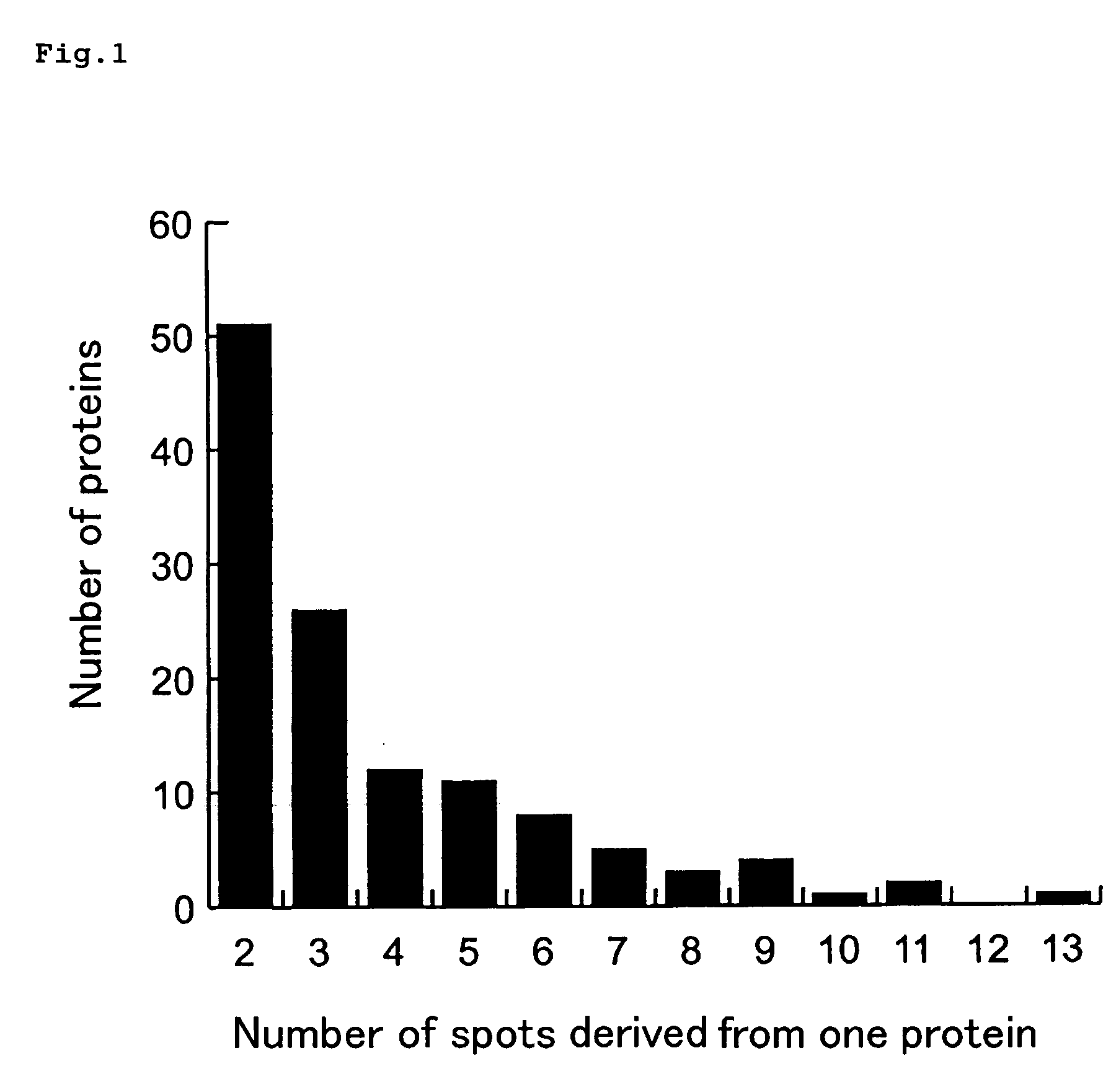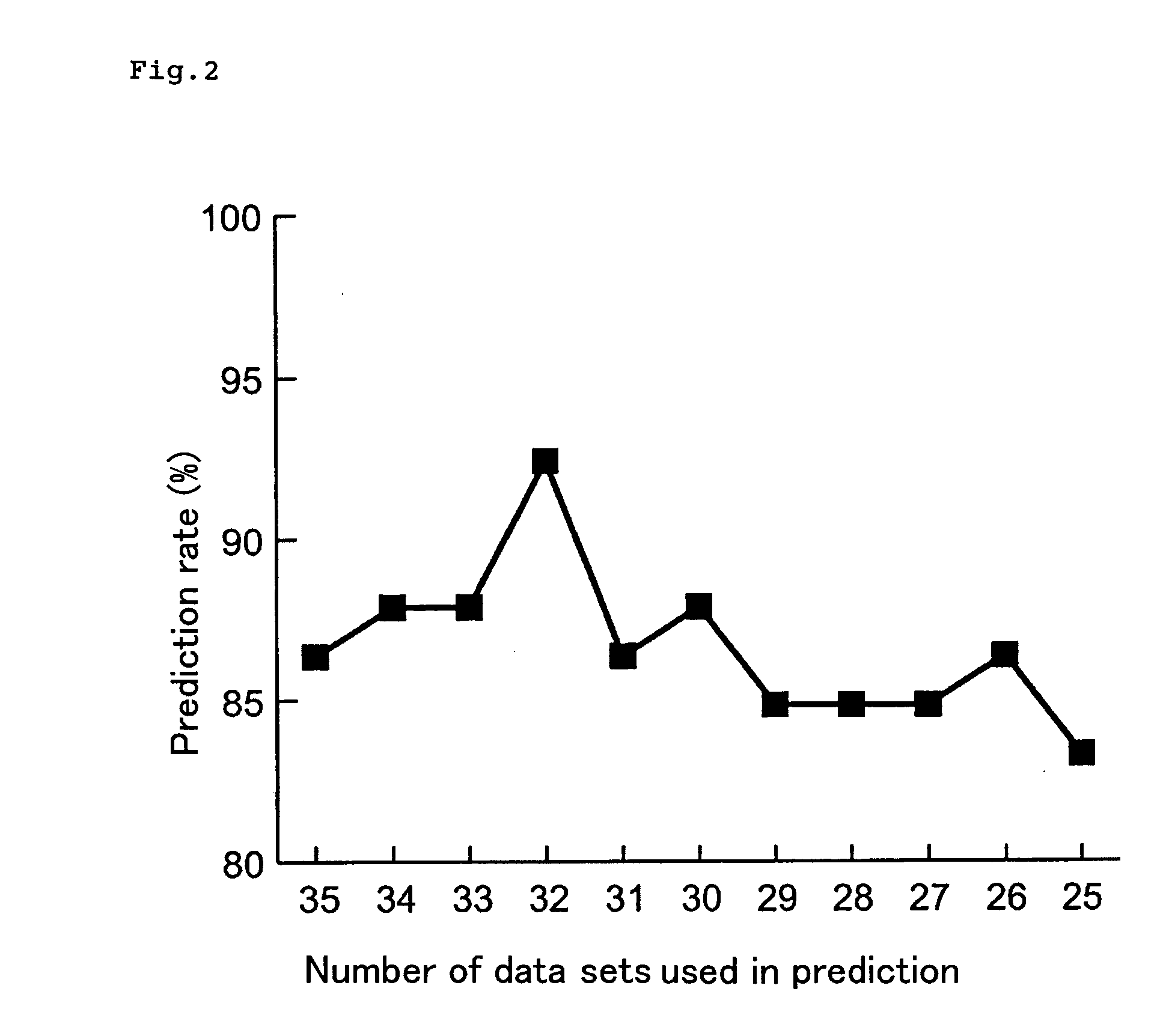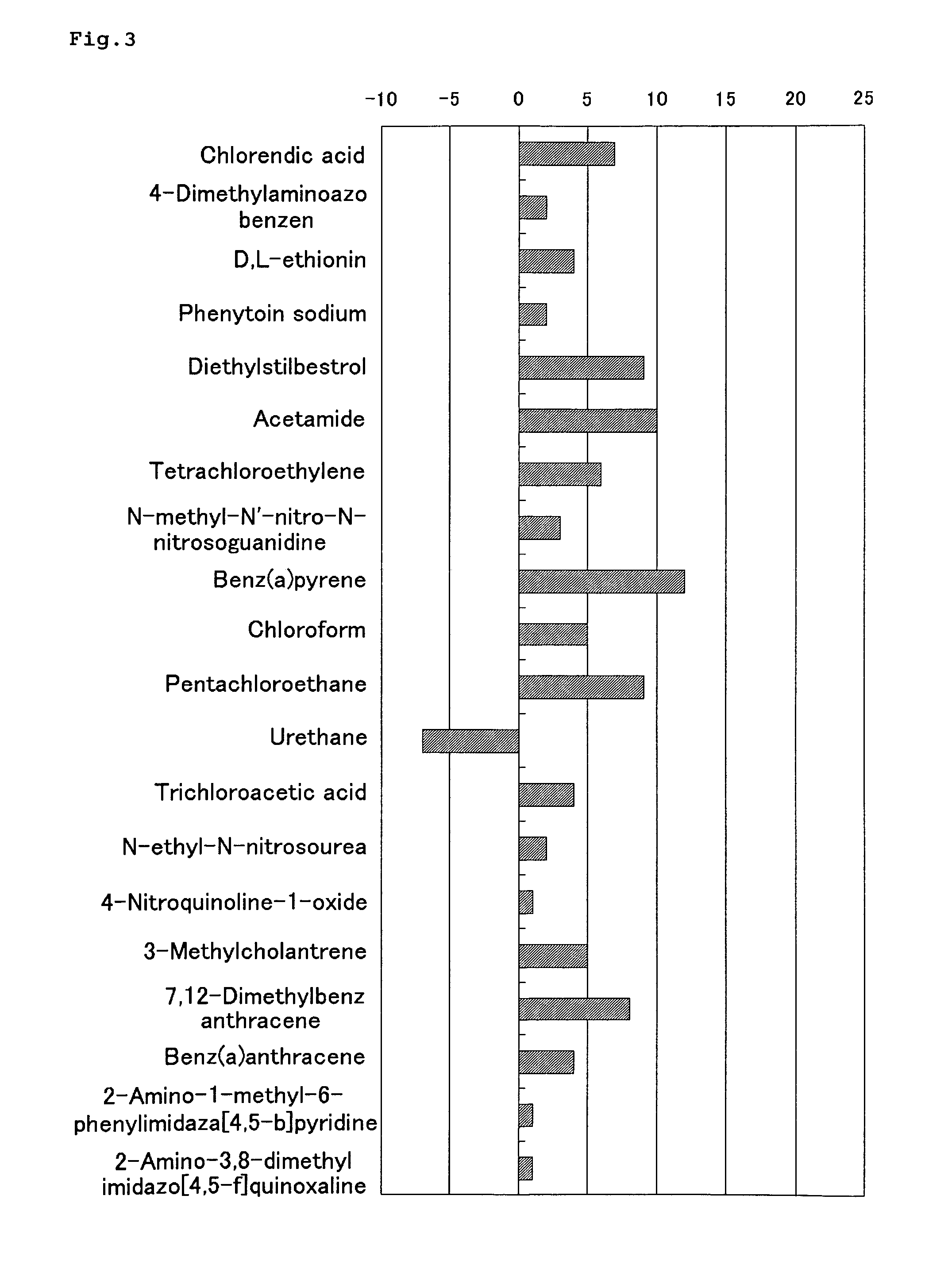Method of Estimating Effect of Test Chemical on Living Organisms
a test chemical and living organism technology, applied in the direction of fluid pressure measurement, liquid/fluent solid measurement, peptide measurement, etc., can solve the problem of not comprehensively analysing the expression changes of modified proteins in distinct proteins
- Summary
- Abstract
- Description
- Claims
- Application Information
AI Technical Summary
Benefits of technology
Problems solved by technology
Method used
Image
Examples
example 1
(1) Two-Dimensional Gel Electrophoresis of Comparative Sample and Control Sample
[0056]Each of the chemicals shown in Tables 1 to 3 was dissolved in a vehicle to prepare respective solutions. The name, CAS No., and carcinogenicity of each chemical, the vehicle used for each chemical, and the amount of each chemical administered to experimental animal are shown in Tables 1 to 3.
[Table 1]
[0057]
TABLE 1AmountadministeredName of substanceCAS No.SolventCarcinogenicity(mg / kg / day)Clofibrate637-07-0Corn oil+250Di(2-ethylhexyl)phthalate117-81-7Corn oil+300Carbon tetrachloride56-23-5Corn oil+502,4-Diaminotoluene95-80-7Water+10Quinoline91-22-5Corn oil+25Phenobarbital50-06-6Water+100Diethylnitrosamine55-18-5Water+202-Nitropropane79-46-9Corn oil+40N-nitrosomorpholine59-89-2Water+10Aldrin309-00-2Corn oil+0.3Di(2-ethylhexyl)adipate103-23-1Corn oil+1000Ethinylestradiol57-63-6Corn oil+0.5Hexachlorobenzene118-74-1Corn oil+5α-Hexachlorocyclohexane319-84-6Corn oil+20Trichloroethylene79-01-6Corn oil+700Bu...
example 2
Prediction of Carcinogenicity Using Support Vector Machine (SVM)
[0085]Prediction of carcinogenicity by SVM was conducted using the differences in logarithms, obtained in (1) to (3) of Example 1. Preparation of a carcinogenicity prediction formula was conducted according to the following procedure.
(a) Post-translational modification data showing characteristic changes were selected based on the t value of Welch between carcinogenic chemical group and non-carcinogenic chemical group.
[0086]A carcinogenicity prediction formula was prepared according to the following procedure, using Support Vector Machine (SVM). As the SVM, there was used a free soft, SVMlight (obtained from URL http: / / svmlight.joachims.org / ). Using the selected post-translational modification data sets and the SVMlight, learning was conducted under the following conditions, to prepare a prediction formula.
Conditions: Linear was used as the Kernel option. A biased hyperplane was used as the hyperplane used for separatio...
example 3
Prediction of Pathologic Findings
[0092]Pathologic findings was predicted using digital data of post-translational modifications. The prediction was conducted according to the following procedure.
(a) Extraction of Post-Translational Modifications which is Characteristic in Occurrence of Hypertrophy of Liver Cell
[0093]Post-translational modification data showing characteristic changes were selected based on the t value of Welch, between 10 chemicals with which pathology of liver cell hypertrophy was seen in the liver after 28 days repeated administration [Clofibrate, di(2-ethylhexyl)phthalate, phenobarbital, hexachlorobenzene, aαhexachlorocyclohexane, safrole, 1,4-dichlorobenzene, furan, dl-menthol and iodoform] and 20 chemicals with which no pathology of liver cell hypertrophy was seen [carbon tetrachloride, 2,4-diaminotoluene, quinoline, diethylnitrosamine, 2-nitropropane, N-nitrosomorpholine, aldrin, di(2-ethylhexyl)adipate, ethinilestradiol, trichloroethylene, butylated hydroxyani...
PUM
| Property | Measurement | Unit |
|---|---|---|
| Fraction | aaaaa | aaaaa |
| Fraction | aaaaa | aaaaa |
| Fraction | aaaaa | aaaaa |
Abstract
Description
Claims
Application Information
 Login to View More
Login to View More - R&D
- Intellectual Property
- Life Sciences
- Materials
- Tech Scout
- Unparalleled Data Quality
- Higher Quality Content
- 60% Fewer Hallucinations
Browse by: Latest US Patents, China's latest patents, Technical Efficacy Thesaurus, Application Domain, Technology Topic, Popular Technical Reports.
© 2025 PatSnap. All rights reserved.Legal|Privacy policy|Modern Slavery Act Transparency Statement|Sitemap|About US| Contact US: help@patsnap.com



